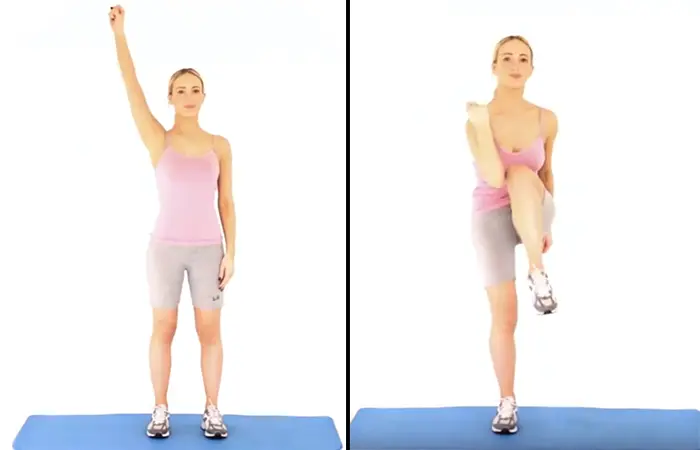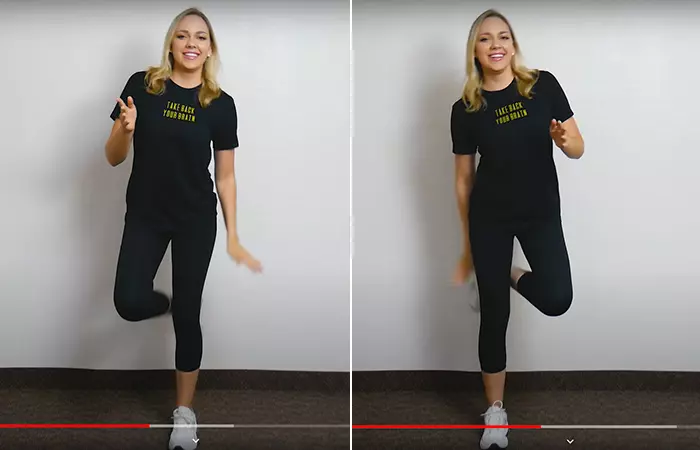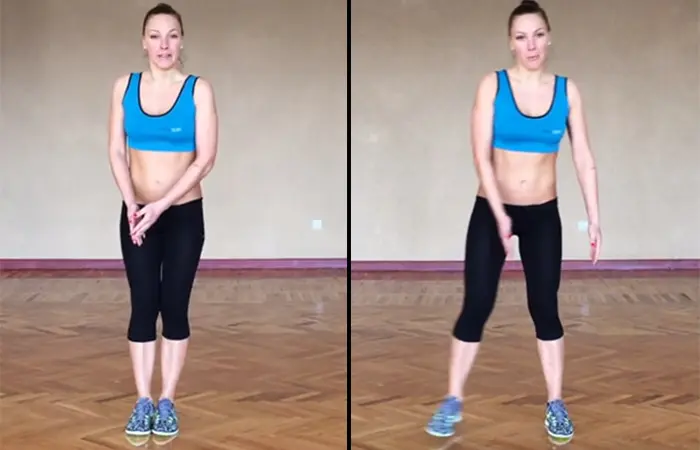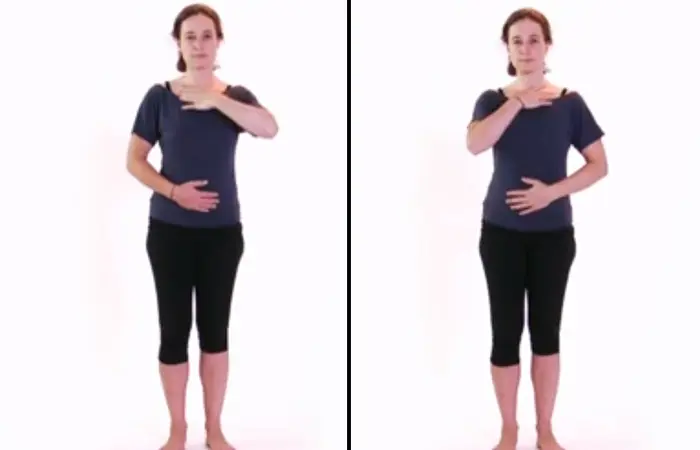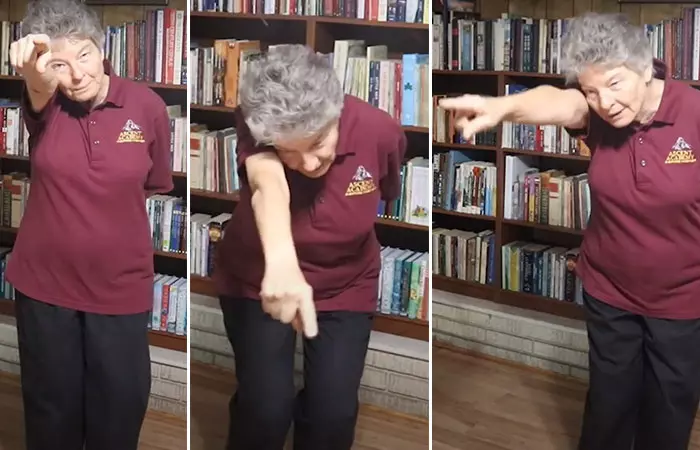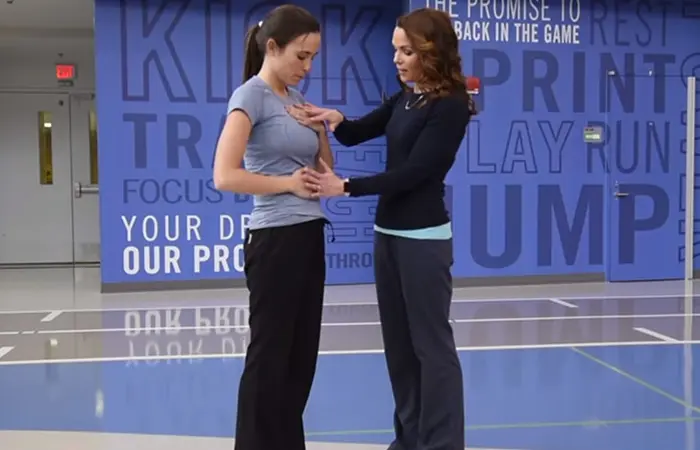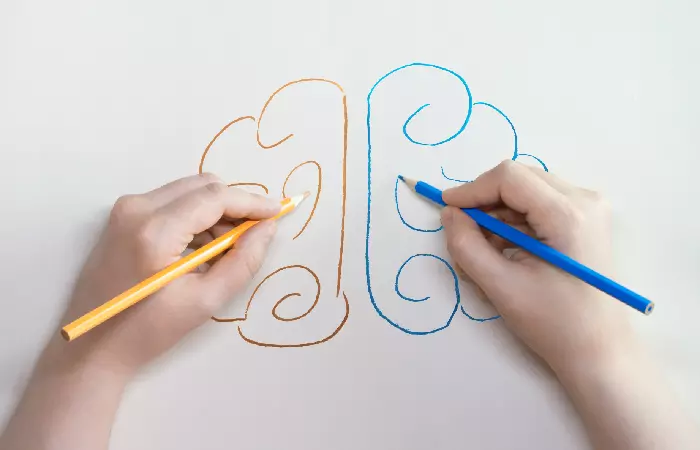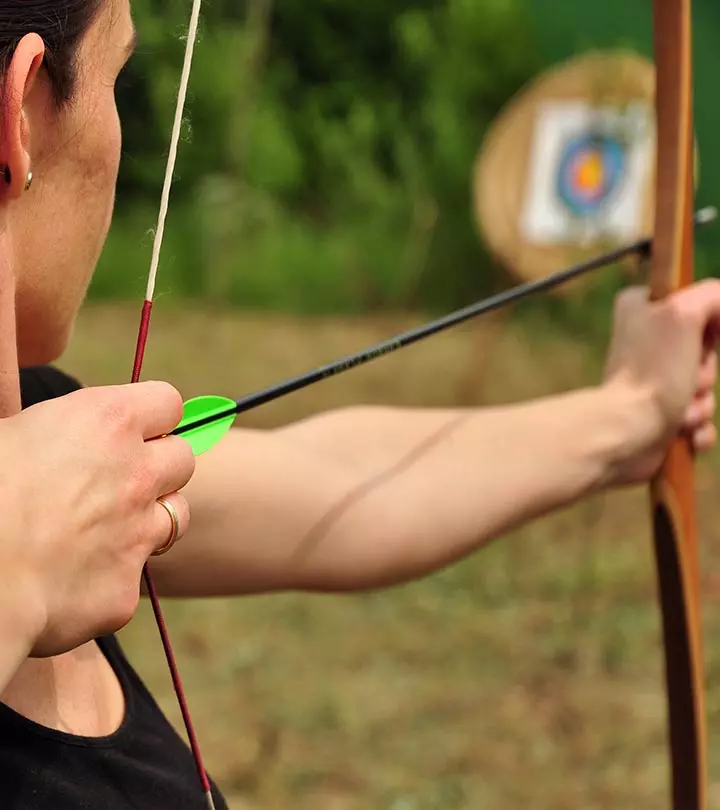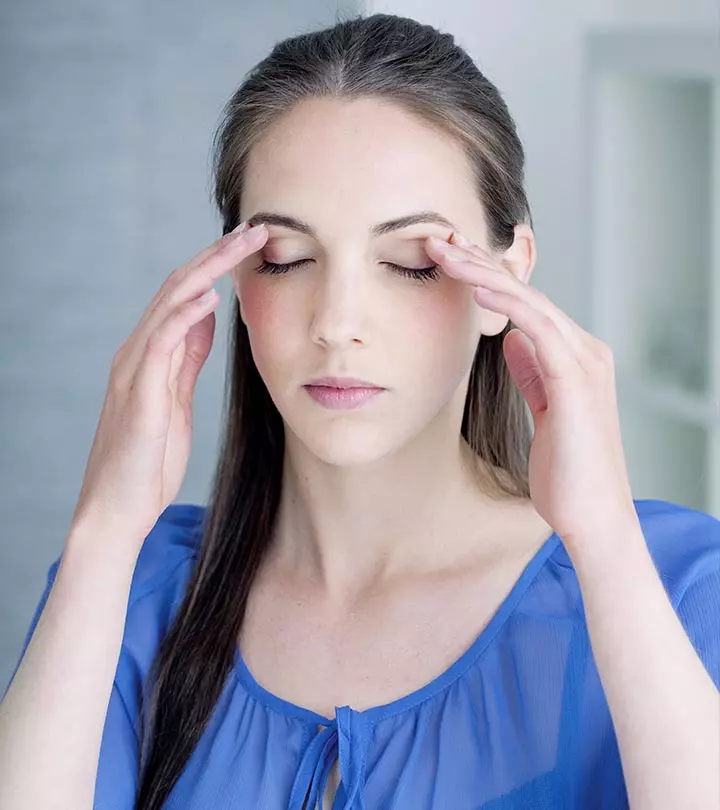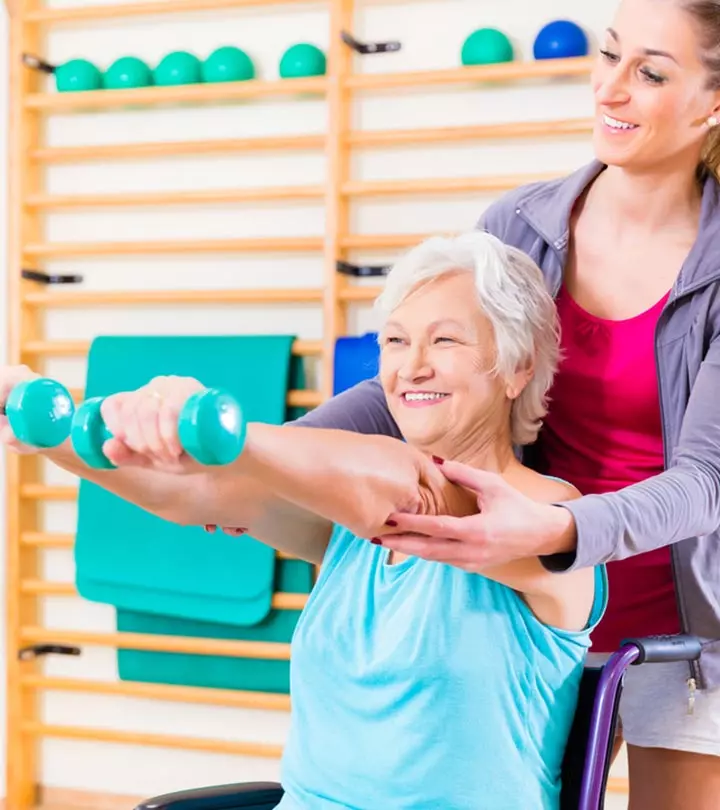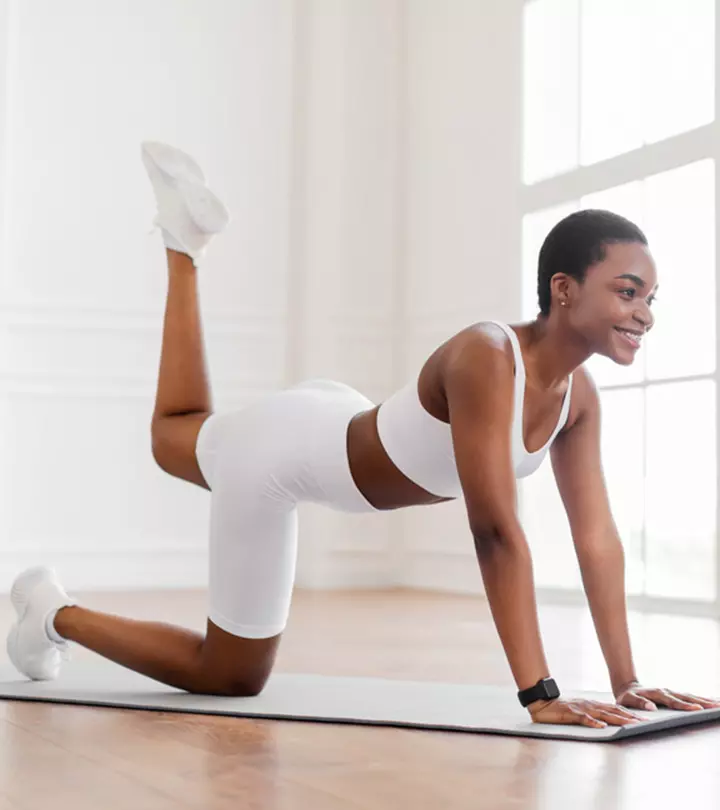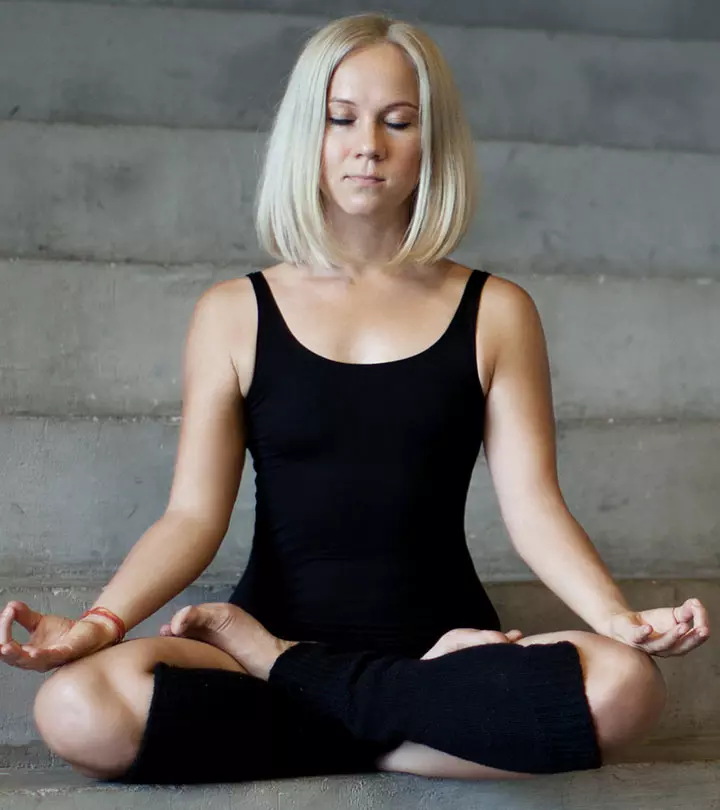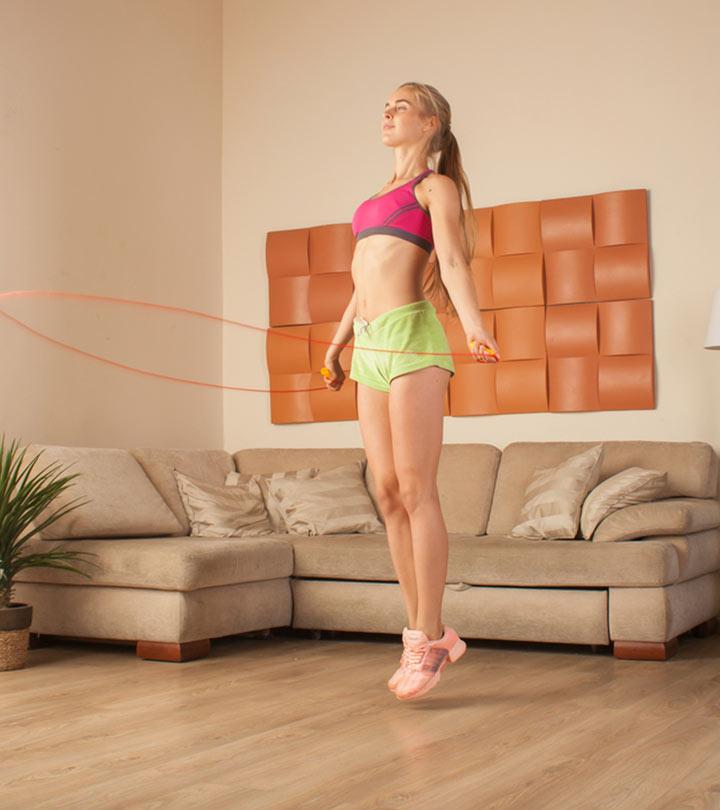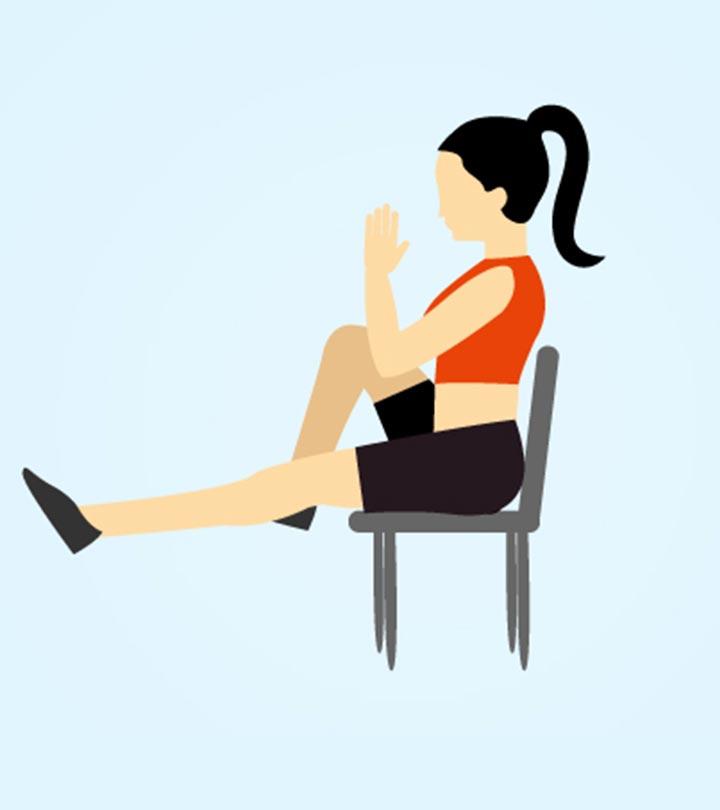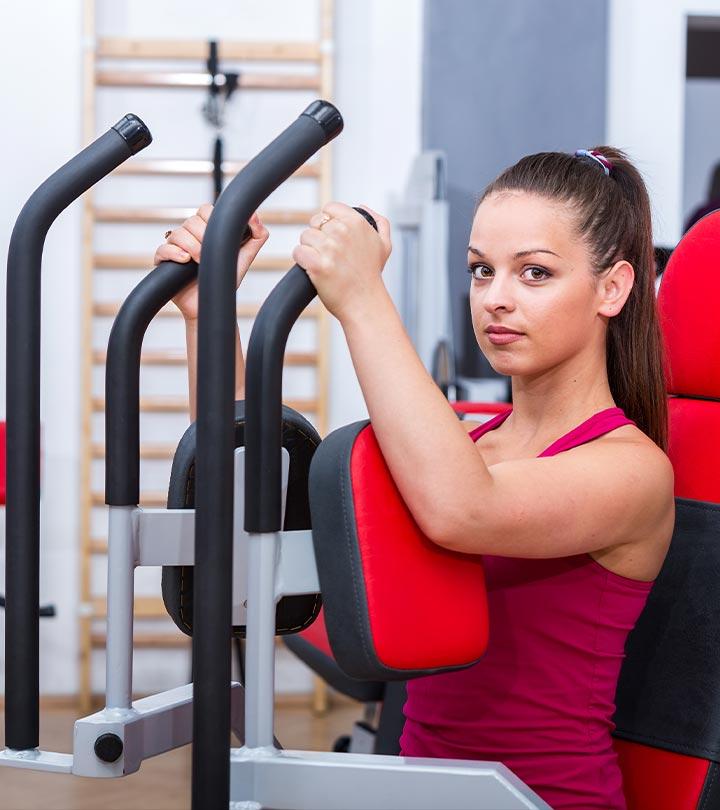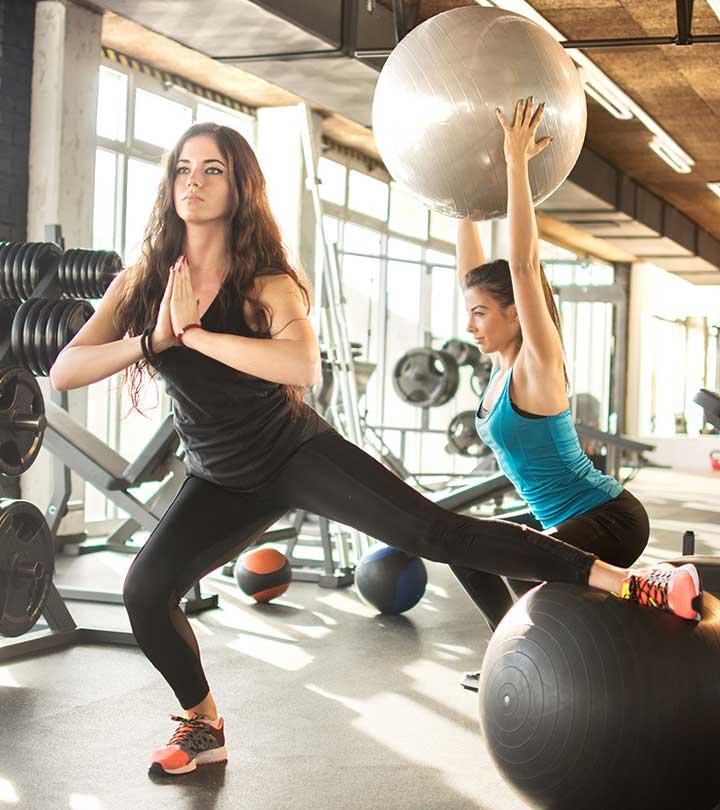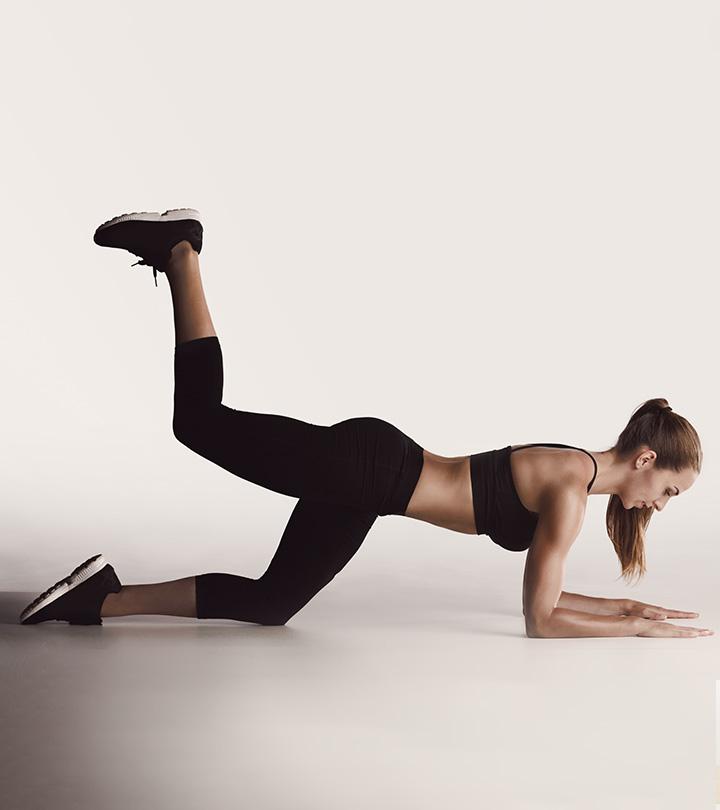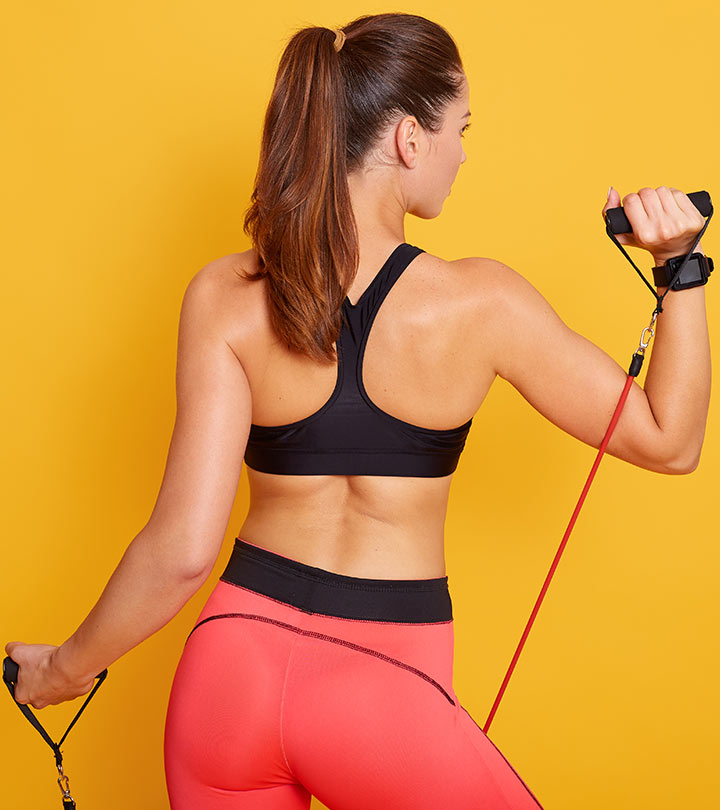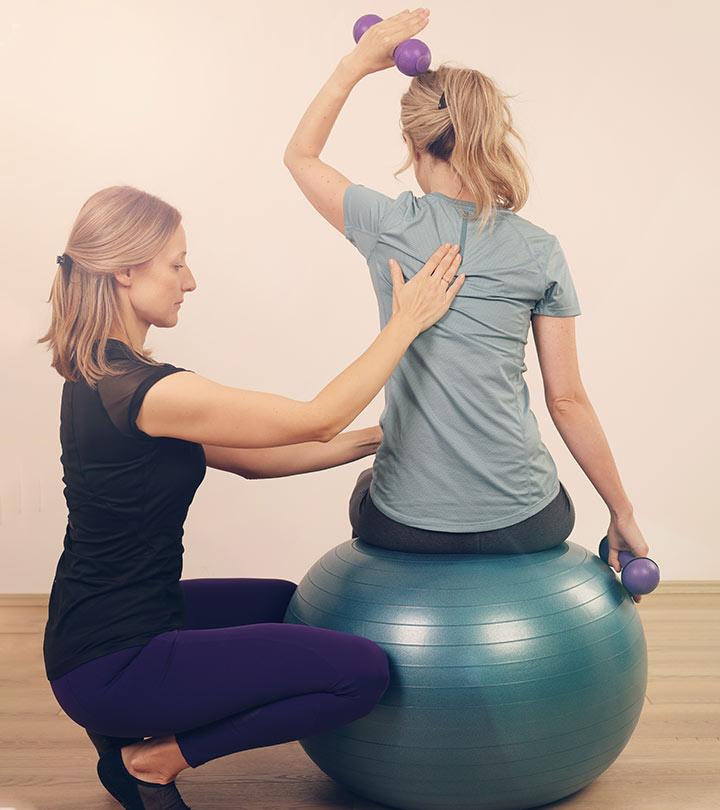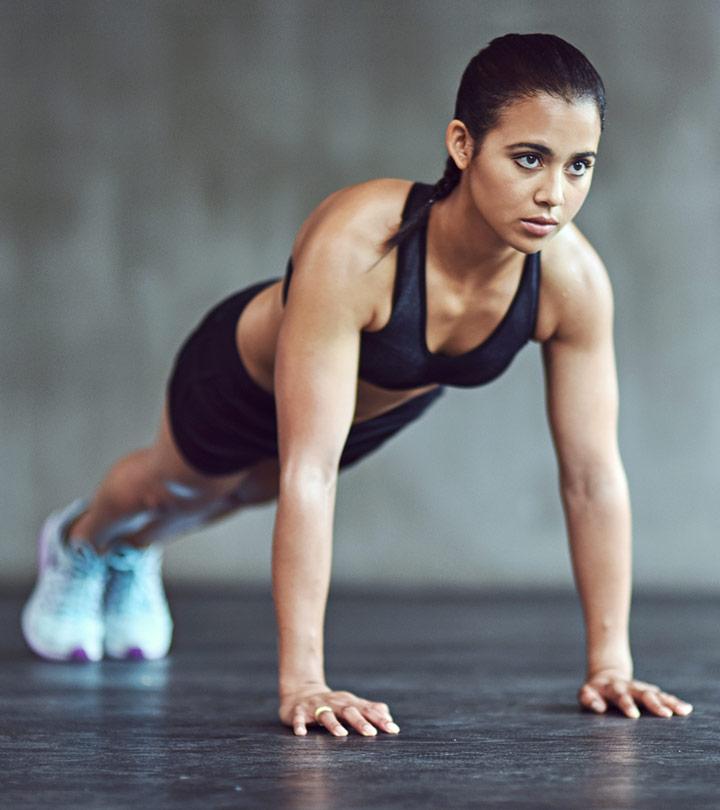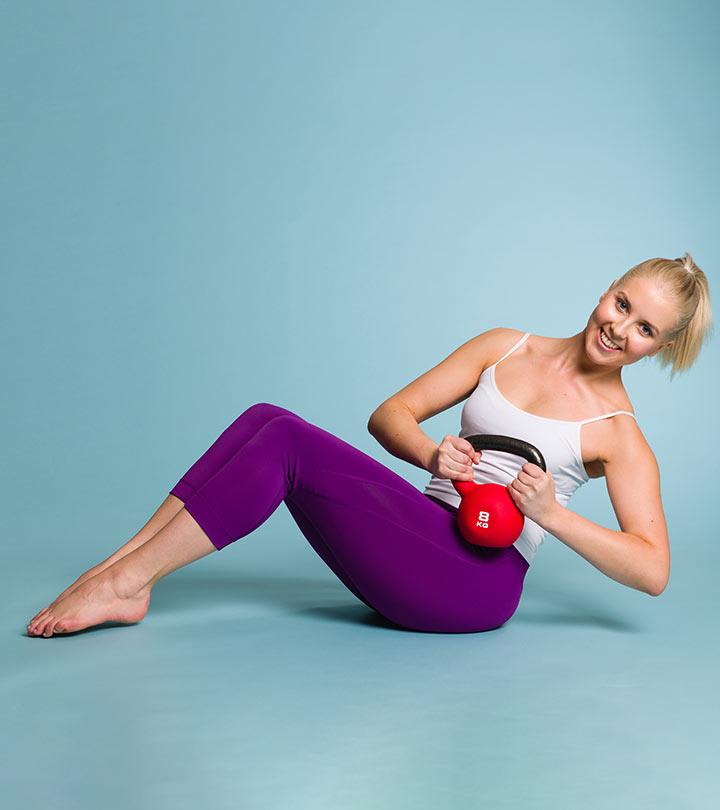16 Easy Brain Gym Exercises To Improve Focus And Memory
Some of the most effective ways to improve concentration, focus, and other cognitive functions.

Image: Shutterstock
Brain gym exercises are simple activities that improve cognitive function. These exercises help enhance learning, communication ability, attention, memory, academic performance in children and also help maintain a healthy lifestyle (1), (2). While they were initially designed for kids, they also may help delay Alzheimer’si A brain disorder that impacts memory, thinking, and cognitive functions due to the shrinking of brain cells. disease, Parkinson’si A brain disorder that leads to degeneration of the nerve cells and causes involuntary movement of the arms, legs, or the jaw disease, cancer, type 2 diabetes, cardiovascular disease, respiratory problems, and depression and anxiety in adults (3), (4), (5), (6).
This article explores the 15 best brain gym exercises and their benefits. Keep reading.
 Workout Blueprint: Brain Gym Exercises
Workout Blueprint: Brain Gym Exercises- Frequency: Daily
- Benefits: Improve focus, enhance memory, promote cognitive health, and minimize stress levels and anxiety
- Equipment Needed: Exercise mat
- Space Required: Small area
- Assistance Required: No
- Who Should Avoid: Anyone who has severe pain in their legs, hand, back, or neck.
In This Article
Why Are Brain Gym Exercises Good?
Michael Hamlin, Certified Personal Trainer, says, “Brain gym exercises are based on the idea that certain movements, such as shaking your hands, rocking, and stretching, can help brain function. There needs to be more research on brain gyms. But a substantial amount of research has found that exercise, in general, can help relieve anxiety and depression by releasing endorphins and improving blood flow in the brain. For example, researchers found that those who exercised regularly showed fewer signs of anxiety and depression when exposed to stress.”
Most brain gym exercises are appropriate for people of all ages. For example, some simple movements such as walking and stretching have been shown to be effective in easing anxiety, regardless of a person’s age or fitness level. In fact, tasks such as sleeping or listening to music also allow the brain to rest and recover, which can help with mental health.
- Make you smarter and sharper.
- Boost your confidence levels.
- Improve your self-esteem.
- Improve attention and memory.
- Boost thinking and decision-making abilities.
- Revitalize your natural healing mechanisms.
- Restore health and harmony.
- Help improve eyesight.
- Enhance creativity and communication skills.
- Cheer you up when you feel disappointed or rejected.
The best part of brain gym is that anyone can do these exercises, from kids to older adults, and improve their quality of life. Explore the brain gym activities in the following section.
16 Brain Gym Exercises
According to Hamlin, “These exercises are designed to develop, increase, and improve functions of the body, such as vision, concentration, balance, coordination, and communication.
Next to this, brain gym exercises are the foundation for developing a more alert and relaxed body and mind, and this translates into improved physiological function. These exercises help improve the functionality of specific neural pathways so that the body and mind work harmoniously together and students can be more balanced and grounded in their physical, mental, and emotional activities.”
Let’s take a look at the brain gym exercises you can do.
1. Marching In Place
Marching in place is a great way to warm up your muscles. This low-to-moderate intensity exercise preps your muscles and improves breathing, balance, and hand-leg coordination.
How To March In Place
- Stand straight with your legs hip-width apart, shoulders rolled back, chest up, and look ahead.
- Lift your right leg and bend your right knee slightly. Place your right leg softly on the floor.
- Lift your left leg and bend your left knee slightly. Place your left leg softly on the floor.
- Do this 30 times. You can use a chair if you find it difficult to march without support.
2. Cross Crawl
Cross crawl exercise helps improve the coordination between the right and left brain. You can do it either by standing, sitting, or lying, depending on your comfort level.
How To Do Cross Crawl
- Stand straight with your legs hip-width apart, shoulders rolled back, and chest up. Look ahead.
- Lift your right hand above your head. This is your starting position.
- Lift your left leg off the floor, and bend your left knee.
- Simultaneously, bend your right elbow and try to touch the left knee with your right elbow.
- Get back to the starting position. Do the same with your left hand and right leg.
- Do three sets with eight repetitions.
You may sit on a chair and do this exercise if you have a knee injury or are relearning to balance your body.
3. Ankle Touch
Similar to the previous exercise, the ankle touch exercise helps enhance balance and coordination between the left and right limbs.
How To Do Ankle Touches
- Stand with your feet shoulder-width apart, hands laterally up, and elbows slightly bent.
- Lift your right foot and touch your right ankle with your left hand.
- Place your right foot on the floor and lift your left foot.
- Try to touch your left ankle with your right hand.
- Do 15-20 reps.
4. Ankle Touch Behind Your Body
This brain gym is another variation of the ankle touch. It is an effective way to improve balance and coordination between the right and left limbs.
How To Do Ankle Touches Behind Your Body
- Stand with your feet shoulder-width apart, hands laterally up, and elbows slightly bent.
- Lift your right foot and try to touch your right ankle with your left hand behind your body. You can bend a little to the side.
- Place your right foot on the floor and lift the left foot.
- Try to touch your left ankle with your right hand behind your body.
- Do 15-20 reps.
5. Step Touch
Step touch, also known as the dancer’s warm-up, is great for lateral or side-to-side movement coordination.
How To Do Step Touch
- Stand with your legs close together.
- Take a step toward your right with your right leg.
- Place your left foot next to your right leg.
- Take a step toward your left with your left leg.
- Place your right foot next to your left leg.
- Do this 30 times at a slow to moderate pace.
6. Neck Circles
Neck circles are good for the neck muscles and head movement coordination. This activity also improves balance if you do it while standing. Keep your eyes closed when you do this exercise.
How To Do Neck Circles
- Stand or sit on a chair and close your eyes. Roll your shoulders back.
- Lower your head and tilt it to the right side.
- Roll your neck from the right to the back, from the back to the left, and then down in the center. This completes one neck circle.
- Repeat 10 of these before doing the same on the left side.
 Quick Tip
Quick Tip7. Cook’s Hook-Up
The cook’s hook-up exercise helps calm the nerves and improves hand and brain coordination.
How To Do Cook’s Hook-Up
- Sit straight on a chair. Cross your right ankle over your left ankle.
- Extend your hands in front of you. Cross the right hand over your left hand and link the fingers.
- Twist the forearms internally and form a hook, as shown in the image. Take six deep breaths.
- Release the hook and join your fingertips. Take six deep breaths.
- Do this 3-5 times.
8. Brain Button
This exercise helps improve the flow of electromagnetic energy. It relaxes the eyes, shoulder, and neck and promotes body balance.
How To Do Brain Button Exercise
- Place your left palm on your belly.
- Place the thumb and index finger of your right hand an inch below your collarbone. Move the fingers in a circular motion.
- Repeat this 10 times.
- Place your right palm on your belly, left fingers an inch below the collarbone, and massage in a circular motion.
- Do this 10 times.
9. Lazy Eights
In lazy eights, you trace the number eight or infinity symbol with a marker on a whiteboard or with a pen/pencil on white paper. Following the shape with your eyes have several benefits. It improves eye muscle movement, visual tracking, peripheral visioni The ability to see objects away from the center that are out of the direct line of sight or from the corner of the eyes. , attention span, and coordination. This activity enhances your abilities to understand languages, study comprehension, and eliminate reversals and transpositions.
How To Do Lazy Eights
- Draw a big infinity symbol on a whiteboard.
- Trace it 20-30 times.
- Fix your eyes on the tip of the marker and trace it with your eyes while drawing the lateral ‘8’ or infinity symbol.
- Breathe. Close your eyes and relax.
10. The Elephant
The elephant brain gym helps improve attention, recognition, perception, memory, speech, spelling, thinking ability, depth perception, and eye coordination.
How To Do The Elephant
- Stand straight. Keep one hand behind you and extend the other above your head such that your upper arm touches your ear and head.
- Bend your knees and extend your right hand in front of you.
- Trace a horizontal ‘8’ or infinity symbol with your extended arm. Move your upper body and eyes while doing so.
- Do this 3-5 times.
- Repeat with the other hand.
Note: You can also do this exercise in a sitting position.
11. The Energy Yawn
The energy yawn exercise helps release tension in the jaw and relaxes the eyes.
How To Do Energy Yawn
- Place your index and middle finger of each hand on the jaw joint.
- Open your mouth and start massaging the joints in a circular motion. Do this five times.
- Close your mouth and massage five times.
- Repeat the steps 10 times.
12. The Thinking Cap
The thinking cap activity is one of those brain exercises for memory that effectively improve learning speed and mood, increases attention span, and boosts memory in kids and adults.
How To Do Thinking Cap
- Sit on a chair. Place your index finger and thumb on your ear.
- Massage the top of your ear and gradually come down to the auriclei The outermost layer of the ear made of skeleton and skin (also called the pinna) that helps collect and transmit sound waves. .
- Massage from the back to the top of your ear.
- Do this slowly for 15 times.
13. Belly Breathing
This exercise helps increase oxygen supply in the body, which, in turn, helps you relax and improves your reading and speaking abilities.
How To Do Belly Breathing
- Stand or sit. Place your right hand on your tummy and your left hand on your chest.
- Breathe in slowly and let your belly rise.
- Purse your lips and breathe out.
- Do this 30 times.
 Quick Tip
Quick Tip14. Trace X
The trace X exercise helps improve eye coordination, vision, depth perception, hearing, and body coordination. It enhances your skills in writing, organization, mathematics, spelling, grammar, language learning, sports, and executive function (planning and scheduling).
How To Do Trace X
- Sit on a chair and close your eyes.
- Trace the alphabet ‘X’ by moving your eyeballs.
- Do this eight times. Rest for 10 seconds and repeat.
- After you are done, close your eyes and relax.
Note: You can also draw a big ‘X’ spanning the diagonals of a whiteboard and trace it with your eyes.
15. Positive Points
This exercise helps draw positive emotions and reduces the negative ones. It releases stress, relieves memory blocks, and boosts your mood. The positive points brain gym also enhances long-term memory and improves learning, reading, academic skills, and stage and sports performances.
How To Stimulate The Positive Points
- Gently touch the points above the eyes, halfway between the eyebrows and the hairline using your fingertips.
- Close your eyes.
- Breathe deeply and slowly for 10 seconds. Think of whatever is bothering you.
- Repeat this three times.
Note: Practice it regularly to train your brain to restrict bothering thoughts.
16. Double Doodle
It is a drawing technique that may help improve focus and memory. This creative way may help engage your brain and improve coordination between the hand and the eye.
How To Do Double Doodle
- Sit in a comfortable position and take a few deep breaths to calm your mind and body.
- Get paper and drawing tools like markers or colored pencils.
- Hold a pen or pencil in each hand.
- Create various shapes, lines, and patterns using both hands, mirroring each other’s movements.
- Once you have created some basic shapes, start filling them with colors.
- You can go with a color scheme or just use your imagination.
Infographic: 7 Easiest Brain Gym Exercises
Brain gym exercises are simple cognitive exercises that help in preventing neurodegenerative diseases and improve cognitive function while also boosts self-confidence and decision-making skills. As discussed in the article there are many exercises that help in improving focus and memory but some of them are difficult to do.
Check out the infographic below to find out the easiest brain gym exercises you should try out. Illustration: StyleCraze Design Team
Workout routines are good for maintaining a fit and healthy body. It is a universal truth that exercising improves your muscle tone and fitness, but there are a few exercises that improve your brain fitness or cognitive function as well. You can look up specific exercises to train certain aspects of brain functioning like brain exercises for concentration, brain exercises for focus, brain exercises for learning, and brain exercises for creativity. They help boost your memory and attention span along with academic and athletic performance. Make sure that you are doing the exercises correctly as incorrect form can lead to injuries or muscle pains. Additionally, you can practice mental exercises that stimulate brain function to enhance cognitive and memory functioning. Consult a therapist and primary care physician before beginning these brain gym exercises to learn how to make the most of these exercises.
Frequently Asked Questions
Can you train your brain like a muscle?
Michael Hamlin says, “The brain is not a muscle, but in many ways, it does work like one. The brain is made up of millions of neurons communicating through electrical and chemical signals. Like a muscle, your brain can be trained to become stronger over time using activities such as brain gym exercises.”
Is brain gym evidence-based?
Yes. Brain gym exercises help improve cognition, mental health, and overall well-being.
Which brain gym exercise is best for students?
The following exercises are best for students:
- Belly breathing
- Positive points
- Thinking cap
- Brain button
How do you exercise your left brain?
Do coordinated moves of the right limbs to exercise your left brain.
Is the brain gym an effective educational intervention?
Yes. The brain gym might help improve thinking, reading, and speaking abilities. However, no evidence shows the brain gym to be an effective educational intervention.
Which brain gym technique to use to calm children down?
You can use Cook’s hook-ups and cross-crawls to help children calm down after experiencing anxiety and distress. Hook-ups can help control their breathing while cross-crawls can improve their focus and release stress.
Does brain gym help autism?
No, current scientific evidence shows that brain gym does not increase engagement in children with autism (7).
How much brain training should you do in a day?
You can practice 60 to 90 minutes of brain training or brain workout every week to keep your brain sharp and healthy.
What time of the day is your brain sharpest?
Studies suggest your brain is sharpest in the mornings following a good night’s sleep (8), (9). Ideally, you can perform cognitive-heavy tasks in the morning.
Key Takeaways
- From kids to adults, anyone can try brain gym exercises to improve their memory, attention, and confidence and delay Alzheimer’s disease and Parkinson’s disease.
- Exercises like cross crawl and ankle touch help improve balance and coordination.
- Brain button is an exercise that helps you relax and promotes body balance.
Learn how to improve your focus and concentration with brain gym exercises. Discover simple and effective techniques in the video below to help you stay focused and productive.
References
Articles on StyleCraze are backed by verified information from peer-reviewed and academic research papers, reputed organizations, research institutions, and medical associations to ensure accuracy and relevance. Read our editorial policy to learn more.
- Brain Gym To Increase Academic Performance Of Children Aged 10-12 Years Old ( Experimental Study in Tembalang Elementary School and Pedalangan Elementary School Semarang)
https://www.researchgate.net/publication/314160660_Brain_Gym_To_Increase_Academic_Performance_Of_Children_Aged_10-12_Years_Old_Experimental_Study_in_Tembalang_Elementary_School_and_Pedalangan_Elementary_School_Semarang - The effects of senior brain health exercise program on basic physical fitness cognitive function and BDNF of elderly women – a feasibility study
https://www.ncbi.nlm.nih.gov/pmc/articles/PMC4977910/ - Physical Activity and Brain Health
https://www.ncbi.nlm.nih.gov/pmc/articles/PMC6770965/ - A Life-Long Approach to Physical Activity for Brain Health
https://www.ncbi.nlm.nih.gov/pmc/articles/PMC5440589/ - Role of exercise on the brain
https://www.ncbi.nlm.nih.gov/pmc/articles/PMC5091051/ - Physical Exercise Enhances Neuroplasticity and Delays Alzheimer’s Disease
https://www.ncbi.nlm.nih.gov/pmc/articles/PMC6296269/ - THE EFFECT OF BRAIN GYM® ON ACADEMIC ENGAGEMENT FOR CHILDREN WITH DEVELOPMENTAL DISABILITIES
https://files.eric.ed.gov/fulltext/EJ1029010.pdf - Memory and Time of Day
https://www.researchgate.net/publication/233046511_Memory_and_Time_of_Day - Identifying the Best Times for Cognitive Functioning Using New Methods: Matching University Times to Undergraduate Chronotypes
https://www.ncbi.nlm.nih.gov/pmc/articles/PMC5395635/
Read full bio of Rakesh Rathod
- Michael Hamlin, CPT, has 13 years of experience in athletics, rehabilitation, fat loss, and nutrition coaching. He has been in the training industry since 2008, and his personal training philosophy is anchored in developing an effective mindset. He has a bachelor's degree in Kinesiology and Exercise Science from the University of Calgary.
 Michael Hamlin, CPT, has 13 years of experience in athletics, rehabilitation, fat loss, and nutrition coaching. He has been in the training industry since 2008, and his personal training philosophy is anchored in developing an effective mindset. He has a bachelor's degree in Kinesiology and Exercise Science from the University of Calgary.
Michael Hamlin, CPT, has 13 years of experience in athletics, rehabilitation, fat loss, and nutrition coaching. He has been in the training industry since 2008, and his personal training philosophy is anchored in developing an effective mindset. He has a bachelor's degree in Kinesiology and Exercise Science from the University of Calgary.
Read full bio of Ravi Teja Tadimalla
Read full bio of Himanshi Mahajan






